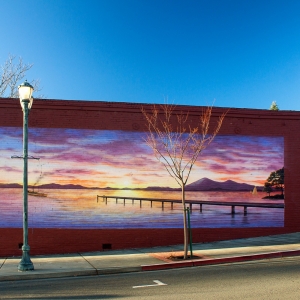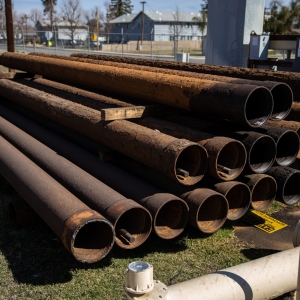The Stream, May 5, 2021: Booming Development In Central Texas Causes Toxic Algae Blooms
YOUR GLOBAL RUNDOWN
- Blooms of toxic algae are contaminating Central Texas waterways due to booming development.
- Arizona will probably have to cut back Colorado River water withdrawals in the next year.
- Some residents on Hawaii’s Big Island still don’t have running water three years after a major volcano erupted.
- South Africa’s Vaal River is severely polluted, according to a recent report.
Parts of Canada could face a water crisis similar to Day Zero conditions in Cape Town, South Africa.
“The Vancouver situation has some eerie parallels to Cape Town.” – John Pomeroy, a world-renowned hydrologist at the University of Saskatchewan. Scientists warn that as climate change worsens, more countries – including Canada – could experience water shortages similar to Day Zero in Cape Town, in 2018. University Affairs reports that rising demand, water shortages, toxic algae blooms and other climate-related disasters are creating a water crisis throughout Canada. The crisis is especially prevalent in First Nations communities, where clean water is regularly contaminated or difficult to access.
- Why it matters: Cape Town narrowly escaped completely running out of water in 2018. In February of that year, Cape Town officials had cut water pressure in the distribution system, drilled emergency wells, deployed small-scale desalination facilities, and challenged residents to use just 50 liters (13 gallons) of water a day.
IN RECENT WATER NEWS
Toxic Cyanobacteria Choke Water Systems Around California’s Clear Lake – Toxic blooms are a public health risk and increase water treatments costs.
Not only an aesthetic affront, harmful algal blooms in California’s Clear Lake are a threat to public health, recreation, and the local economy. For the 18 public water systems that draw from the lake the noxious blooms are something else: an operating hazard that is complicating their treatment processes and increasing the cost of providing clean water in one of the state’s poorest counties.
The degradation of Clear Lake and the steps water managers are taking to deal with it, are a distillation of the turmoil that algae and cyanobacteria are taking across the United States and around the world. Reducing the threat is expensive. State and federal water quality regulators, prodded by deteriorating conditions at Clear Lake and in other areas, are taking notice.
Universal WASH Gains Traction Even as Hand Pumps Lose Ground – Troubled water supply systems in Africa spur demand for new technology.
Well over 1 billion people have gained access to clean water since India Mark II and Afridev hand water pumps went into widespread operation in the 1980s. That’s success. But they are ticklish to manage. According to various studies, between 25 percent to 40 percent of the installed pumps no longer work due to weak community maintenance programs, corrosion, failed parts, and poor well construction.
Because of that, the Mark II and Afridev pumps are stirring another dispute: Could the “death of the hand pump,” as the Dutch think tank IRC suggests, be at hand?
In Case You Missed It:
California Tribes Call Out Degradation of Clear Lake – A monitoring program tracks toxic cyanobacteria and influences change.
HotSpots H2O: In Mali, Climate Change disrupts Peace Efforts – Climate change, environmental insecurity, and limited fresh water are escalating conflict throughout Mali, preventing peace-building and disrupting livelihoods, according to a new report.
Development In Central Texas Causing Toxic Algae Blooms
Booming development in central Texas could be contributing to toxic algae blooms in regional waterways, KVUE reports. Population growth in cities like Austin is overwhelming water treatment plants, allowing for an excess of nutrients to be discharged into nearby bodies of water. This has produced algae blooms that can threaten human health and wildlife.
- Why it matters: Despite its setbacks, Austin is considered a world leader in water innovation. In 2018, the city adopted a 100-year water plan that calls for conservation and recycling programs so advanced that the city anticipates supplying a healthy share of its future water demand in the fast-growing city by reengineering its water system as a water collection and recycling loop.
TODAY’S TOP WATER STORIES, TOLD IN NUMBERS
2022
The Arizona Department of Water Resources announced last week that the state will probably be required to cut back its withdrawals of Colorado River water by 2022. The New Republic reports that other states within the Colorado River Basin are expected to make similar moves as water in the region becomes scarcer. The real challenge will be equity, as almost 30 Native American tribes throughout the basin already lack adequate access to potable water.
$236.5 MILLION
Three years after the Kilauea volcano erupted in Hawaii and damaged an estimated $236.5 million in public infrastructure, the Associated Press reports that some residents still lack running water. The ground in some places around the Big Island is still hot from the eruption. That has hurt the reliability of the island’s water system, the county’s recovery manager said.
ON THE RADAR
A report released earlier this year shows that every day millions of liters of untreated sewage are discharged into South Africa’s Vaal River. The Mail & Guardian reports that the pollution affects 19 million people who rely on the river for drinking, domestic, and commercial use. After the report was released in February, though, local residents say not much has changed.
Jane is a Communications Associate for Circle of Blue. She writes The Stream and has covered domestic and international water issues for Circle of Blue. She is a recent graduate of Grand Valley State University, where she studied Multimedia Journalism and Women, Gender and Sexuality Studies. During her time at Grand Valley, she was the host of the Community Service Learning Center podcast Be the Change. Currently based in Grand Rapids, Michigan, Jane enjoys listening to music, reading and spending time outdoors.






Leave a Reply
Want to join the discussion?Feel free to contribute!